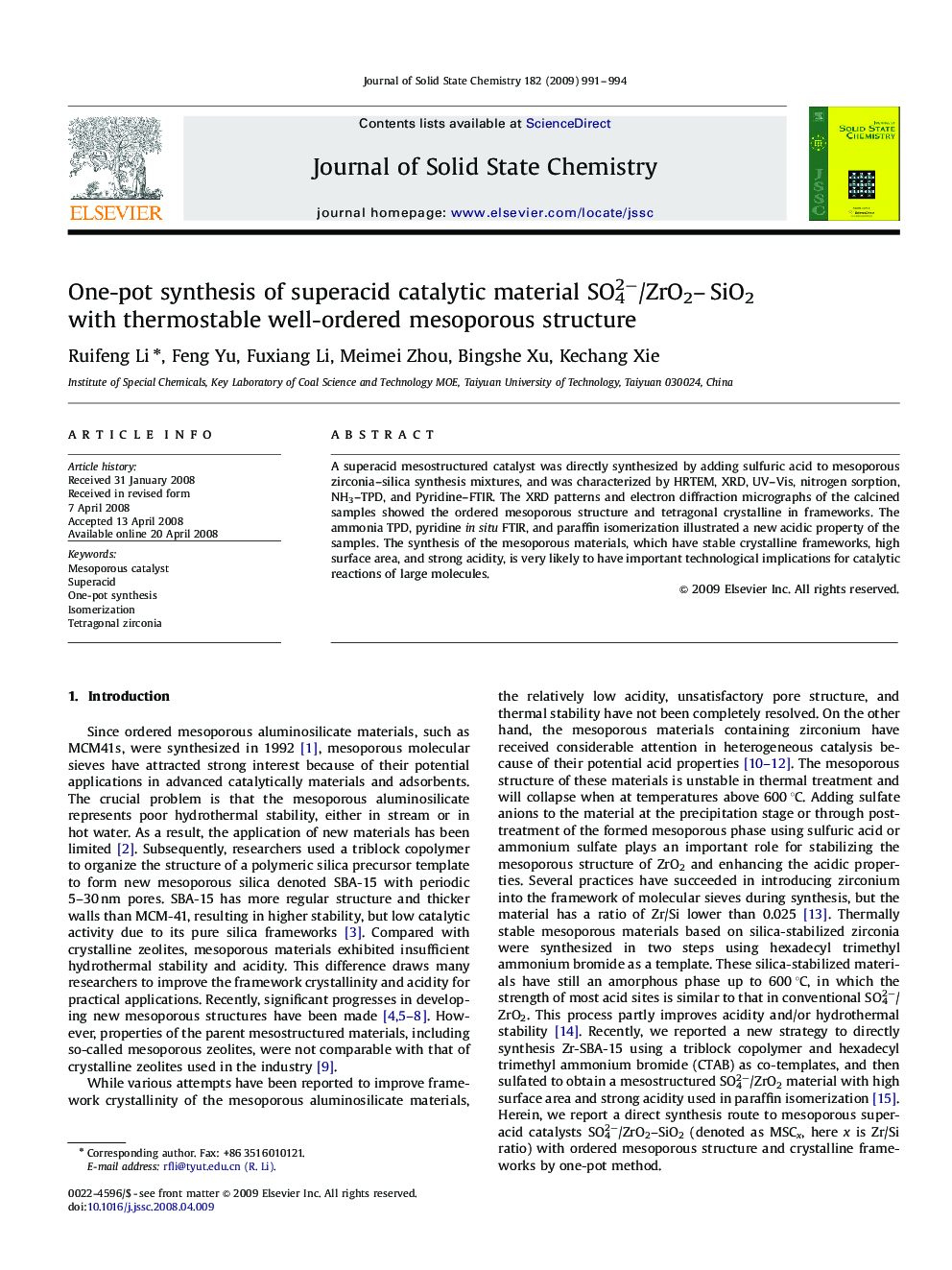| Article ID | Journal | Published Year | Pages | File Type |
|---|---|---|---|---|
| 1329278 | Journal of Solid State Chemistry | 2009 | 4 Pages |
A superacid mesostructured catalyst was directly synthesized by adding sulfuric acid to mesoporous zirconia–silica synthesis mixtures, and was characterized by HRTEM, XRD, UV–Vis, nitrogen sorption, NH3–TPD, and Pyridine–FTIR. The XRD patterns and electron diffraction micrographs of the calcined samples showed the ordered mesoporous structure and tetragonal crystalline in frameworks. The ammonia TPD, pyridine in situ FTIR, and paraffin isomerization illustrated a new acidic property of the samples. The synthesis of the mesoporous materials, which have stable crystalline frameworks, high surface area, and strong acidity, is very likely to have important technological implications for catalytic reactions of large molecules.
Graphical abstractTEM images of the calcined mesoporous catalyst MSCx (x=1.1), in which no aggregated ZrO2 particles can be observed. The corresponding electron diffraction (insets in figures) indicated the final product was a mesoporous material with a crystalline framework.Figure optionsDownload full-size imageDownload as PowerPoint slide
